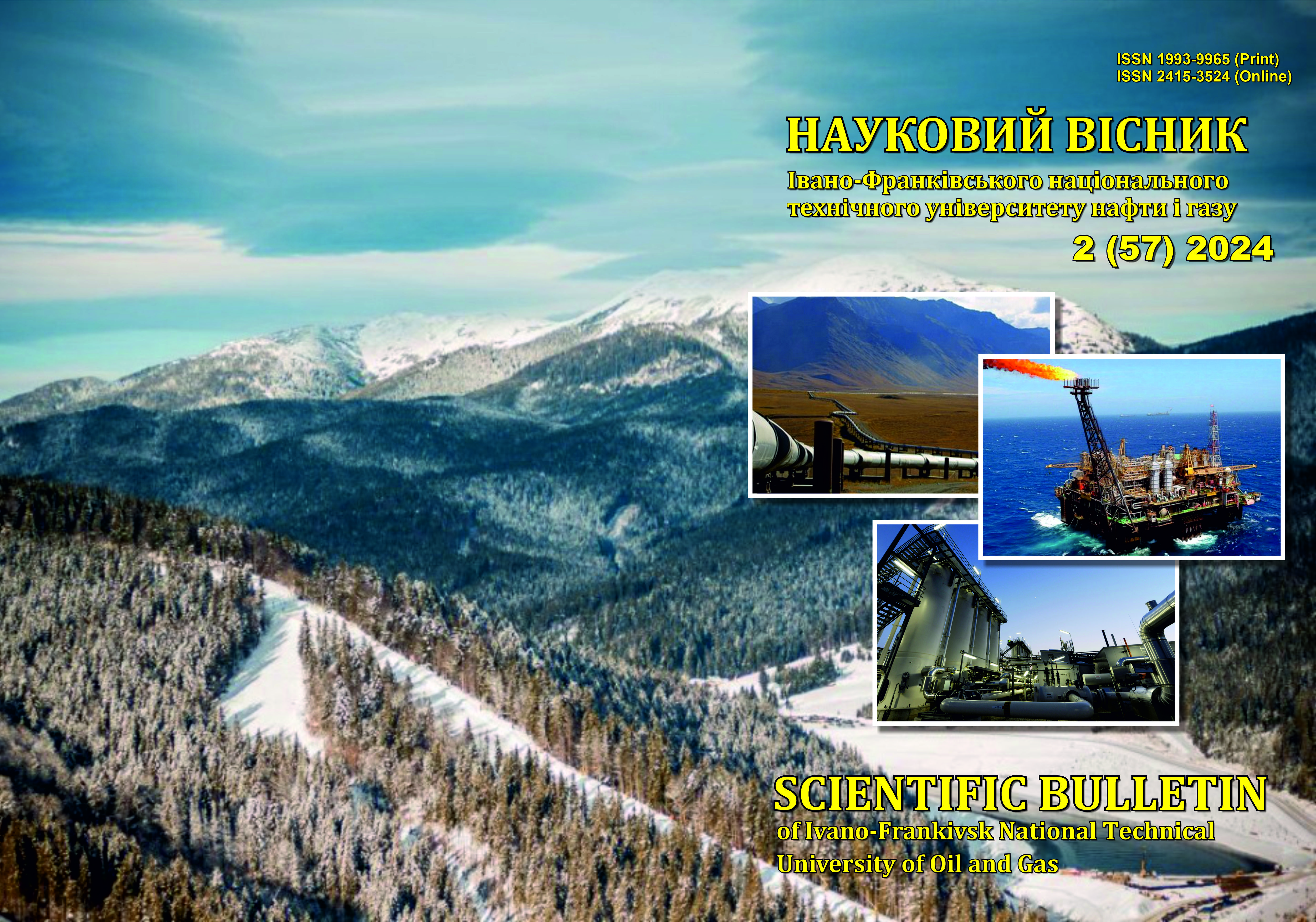USING THE SciPy ECOSYSTEM TO AUTOMATE THE PLANNING OF THREAD MANUFACTURING PROCESSES
DOI:
https://doi.org/10.31471/1993-9965-2024-2(57)-86-95Keywords:
Computer-Aided Process Planning, thread processing, technological process, Python, SymPyAbstract
Based on the Python language and its SciPy package ecosystem, software components have been developed that are intended for automating the design of technological processes for thread manufacturing, in particular for calculating thread processing modes, calculating the main time for thread processing, and selecting optimal modes and methods for thread manufacturing. They can be used as components of CAPP and PLM systems for threaded parts. The principles for designing such components are presented. Functions that yield the value of the primary time for thread manufacturing using various ways have been written, as have functions that transform these into SymPy equations and solve these equations symbolically. This adds declarative programming capabilities to Python and intellectualizes the solution of many problems of selecting optimal methods and processing modes. Software tools have been developed to automate the formation of documentation for functions that contain a description of arguments and LaTeX formulas describing these functions. Methods for formalizing reference tabular data for selecting thread manufacturing modes, including using the Pandas package, are shown. The proposed methods are focused on convenient database queries, analysis and processing of this data. Methods of interpolation and visua-lization of this tabular data for more accurate calculation of modes are shown. Examples of using the developed components in Jupyter Notebook are shown.
.
Downloads
References
Azab A., Osman H., Baki F. CAPP-GPT: A computer-aided process planning-generative pretrained transformer framework for smart manufacturing. Manufacturing Letters. 2024. Vol. 41. Supplement P.51-62. URL: https://doi.org/10.1016/j.mfglet.2024.09.009.
Stavropoulos P., Tzimanis K., Souflas T. et al. Knowledge-based manufacturability assessment for optimization of additive manufacturing processes based on automated feature recognition from CAD models. Int J Adv Manuf Technol. 2022. No 122. P. 993–1007. URL: https://doi.org/10.1007/s00170-022-09948-w
Dannen T., Gey M., Weber S., Stauder L., Barth S., Bergs T. Approaches for automated and computer-aided work plan generation for adaptive manufacturing process chains in one-off manufacturing – a literature review. Procedia CIRP. 2023. Vol. 120. P. 1410-1415. URL: https://doi.org/10.1016/j.procir.2023.09.185.
Rozrakhunok naivyhidnishykh rezhymiv rizannia pry tochinni: navch. posib. / A. I. Hrabchenko, M. D. Uzunian, N. V. Zubkova ta in. Kharkiv : NTU «KhPI», 2014. 88 p. [in Ukrainian]
Astakhov V.P. Cutting Force Modeling: Genesis, State of the Art, and Development. Mechanical and Industrial Engineering. Materials Forming, Machining and Tribology. Davim, J.P. (eds). Cham : Springer, 2022. URL: https://doi.org/10.1007/978-3-030-90487-6_2
Scientific computing tools for Python - SciPy.org. URL: https://projects.scipy.org (accessed 31.12.24).
Harris C.R., Millman K.J., van der Walt S.J. et al. Array programming with NumPy. Nature. 2020. 585. P. 357–362. https://doi.org/10.1038/s41586-020-2649-2.
Virtanen P., Gommers R., et al. SciPy 1.0: Fundamental Algorithms for Scientific Computing in Python. Nature Methods. 2020. No 17(3). P. 261-272. URL: https://doi.org/10.1038/s41592-019-0686-2.
Meurer A, Smith CP, et al. SymPy: symbolic computing in Python. PeerJ Computer Science. 2017. 3:e103. URL: https://doi.org/10.7717/peerj-cs.103.
Hunter J. D. Matplotlib: A 2D graphics environment. Computing in Science & Engi-neering. 2007. 9(3). P. 90-95. URL: https://doi.org/10.1109/MCSE.2007.55.
McKinney W. Data structures for statistical computing in python. Proceedings of the 9th Python in Science Conference, Stefan van der Walt and Jarrod Millman (eds). 2010.Vol. 445. P. 56 – 61. URL: https://doi.org/10.25080/Majora-92bf1922-00a.
Kluyver T, Ragan-Kelley B, Fernando Perez, Granger B, Bussonnier M, Frederic J, et al. Jupyter Notebooks – a publishing format for reproducible computational workflows. IOS Press, Positioning and Power in Academic Publishing: Players, Agents and Agendas. Loizides F, Schmidt B, editors. 2016. P. 87–90. URL: https://doi.org/10.3233/978-1-61499-649-1-87.
Tonejca L., Trautner T., Slimane E., Peso N., Zulehner J., Bleicher F. Automated Design of Experiments supporting Feature-based Optimisation of Manufacturing Processes. Procedia CIRP. 2024. Vol. 130. P. 1611-1616, URL: https://doi.org/10.1016/j.procir.2024.10.290.
Ince C.-V., Schönburg J., Raatz A. Ap-proach of Automated Robot Arrangement in Manufacturing Cells. Procedia CIRP. 2024. Volume 128. P. 286-291. URL: https://doi.org/10.1016/j.procir.2024.06.023.
Wolf M., Elser A., Riedel O., Verl A. A software architecture for a multi-axis additive manufacturing path-planning tool. Procedia CIRP. 2020. Vol. 88. P. 433-438. URL: https://doi.org/10.1016/j.procir.2020.05.075.
Köhler T., Song B., Bergmann J. P., Peters D. Geometric feature extraction in manufacturing based on a knowledge graph. Heliyon. 2023. Vol. 9. Issue 9. e19694. URL: https://doi.org/10.1016/j.heliyon.2023.e19694.
Fuchs T., Enslin C., Samsonov V., Lüt-ticke D., Schmitt R. H. ProdSim: An Open-source Python Package for Generating High-resolution Synthetic Manufacturing Data on Product, Machine and Shop-Floor Levels. Procedia CIRP. 2022. Vol. 107. P. 1343-1348. URL: https://doi.org/10.1016/j.procir.2022.05.155.
Katsigiannis M., Evans M., Osho J., Pantelidakis M., Bitencourt J., Mykoniatis K. Empowering decentralized production: A distributed manufacturing system for additive manufacturing processes. Manufacturing Letters. 2024 .Vol. 41. Supplement, P. 1507-1514. URL: https://doi.org/10.1016/j.mfglet.2024.09.177.
Kopei V.B. Rozrobka prohramnykh komponentiv movoiu Python ta yikh vykorystannia v IPython Notebook. Visnyk Universytetu «Ukraina», seriia «Informatyka, obchysliuvalna tekhnika ta kibernetika». 2017. No 1(19). P. 208-214. URL: https://visn-it.uu.edu.ua/old_site/files/2015/15.pdf. [in Ukrainian]
Holland M., Chaudhari K. Large language model based agent for process planning of fiber composite structures. Manufacturing Letters. 2024. Vol. 40. P. 100-103. URL: https://doi.org/10.1016/j.mfglet.2024.03.010.
Esmaeili-Qeshlaqi M., Tavakkoli-Moghaddam R., Siadat A. Optimizing Dynamic Optimization of a Reconfigurable Manufacturing System under Risk and Human Factors. IFAC-PapersOnLine. 2024. Vol. 58. Issue 19. P. 361-366. URL: https://doi.org/10.1016/j.ifacol.2024.09.238
Kopei V.B. Komponent dlia deklara-tyvnoho prohramuvannia v Python. Informatsiini ta modeliuiuchi tekhnolohii. Materialy vseukrainskoi naukovo-praktychnoi konferentsii IMT-2015. Cherkasy : PP Nechytailo O.F., 2015. P.23-23. [in Ukrainian]
Kopei V.B., Bilenko P.O. Realizatsiia deklaratyvnoho prohramuvannia v Python za dopomohoiu matematychnykh bibliotek SymPy ta SciPy. Molod: osvita, nauka, dukhovnist: tezy dopovidei KhIII Vseukr. nauk. konf., (m. Kyiv, 12–14 kvitnia 2016 r.) u II chast. Ch. II. Kyiv : Universytet «Ukraina», 2016. P. 227-229. [in Ukrainian]
Kopei V., Onysko O., Barz C., Dašić P., Panchuk V. Designing a Multi-Agent PLM System for Threaded Connections Using the Principle of Isomorphism of Regularities of Complex Systems. Machines. 11(2). 2023. P.263. URL: https://doi.org/10.3390/machines11020263.
Sphinx. Sphinx documentation. URL: https://www.sphinx-doc.org (accessed 31.12.24).
pdoc – Generate API Documentation for Python Projects. URL: https://pdoc.dev (accessed 31.12.24).
Knuth D. E. Literate Programming. The Computer Journal. 1984. Volume 27. Issue 2. P. 97–111. URL: https://doi.org/10.1093/comjnl/27.2.97
Pycco. URL: https://pycco-docs.github.io/pycco (accessed 31.12.24).
MkDocs. URL: https://www.mkdocs.org (accessed 31.12.24).
Built with Jupyter Book. URL: https://jupyterbook.org (accessed 31.12.24).
Kopei V., Onysko O., Proniuk I. Components of the expert system of threaded connections: ThreadingT.py, ThreadingV.py, example2.py, Threading.ipynb. URL: https://github.com/vkopey/ThreadES (accessed 31.12.24).
Orthogonality and the DRY Principle. A Conversation with Andy Hunt and Dave Thomas, Part II by Bill Venners, March 10, 2003. URL: https://www.artima.com/articles/orthogonality-and-the-dry-principle (accessed 31.12.24).
/j.procir.2023.09.185.
Downloads
Published
How to Cite
Issue
Section
License
Авторські права....


1.png)

















